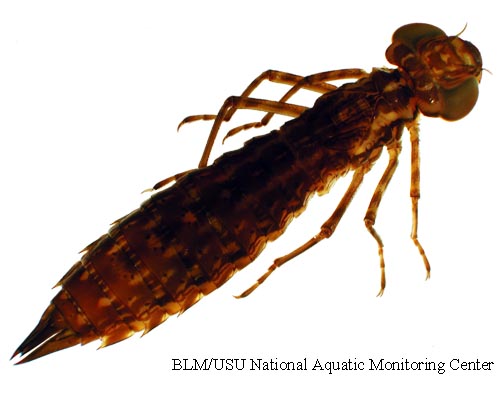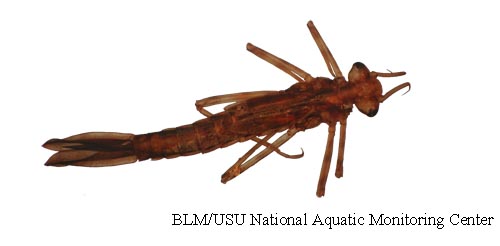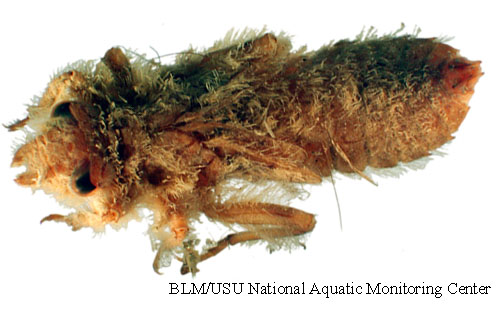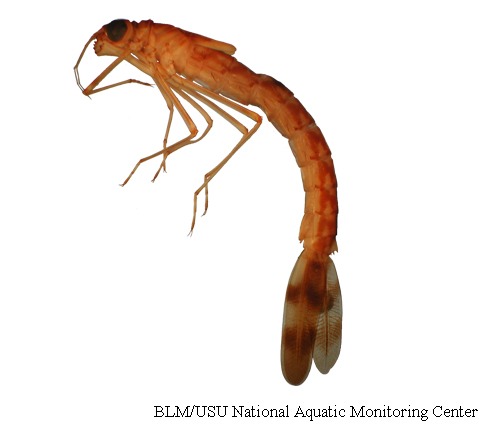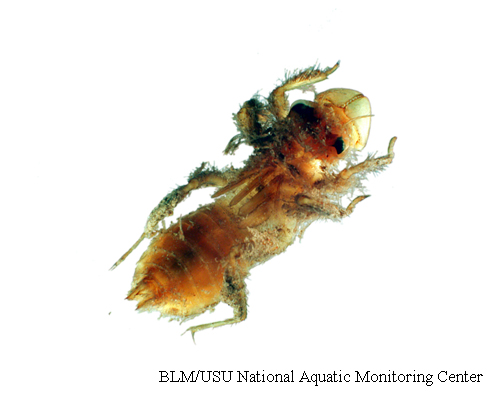UPCOMING EVENTS
View full calendarKey to Aquatic Macroinvertebrates in Utah - Odonata
Odonata Order
There are two suborders within the order Odonata: Anisoptera (dragonflies) and Zygoptera (damselflies). Odonata larvae are predators and are characterized by a large, hinged labium (lower jaw). Dragon flies and damsel flies can be identified to family by the shape of the prementum, which is the lower half of the labium.
Anisoptera have large robust bodies and do not have visible gills, rather they have internal gills inside the anal region of their abdomen. They propel themselves forward by the rapid ejection of water from their abdomen.
Zygoptera have more elongate bodies with a head wider than their abdomen. They have 3 leaf-like gills (caudal lamellae) extending from the end of their abdomen.
Family
Aeshinidae (darner dragon flies)
Description: 31-50 mm in length. Aeshididae are large bodied with large contigous compound eyes. They have a flat prementum, and 6-7 segments on a slender antennae. Length 31-50mm
Habitat: Commonly collected in vegetation along the edges of lakes and ponds and in some slow rivers in woody debris.
Calopterygidae (broad winged damselfies)
Description: 25-50 mm in length. Caloptergidae prementum has a deep median cleft. Antennae segment 1 (closest to the head) is longer than all other antennae segments.
Habitat: Commonly found along stream margins clinging to vegetation and woody debris.
Cordulagastridae (dragon flies, green eyed skimmes, biddies)
Description: 35-45 mm in length. Cordulagastridae are very large, hairy, typically dark or metallic, with a broad flat head. The prementum is spoon shaped with irregular, jagged teeth.
Habitat: Typically found half buried in sand and silt substrates where they wait for prey.
Coenagrionidae (narrow winged damselfies)
Description: 15-25 mm in length. Coenagrionidae have a short, triangular prementum without a long narrow base. The caudal lamellae are leaf-like and similar in length.
Habitat: Found in ponds, lakes, and slow flowing rivers. Most often associated with vegetation.
Gomphidae (clubtail dragonflies)
Description: 4 segmented antennae with enlarged 3rd segment, prementum flat, 2 segmented tarsus on mid legs. Length 5-75mm.
Habitat: In still, slower moving fresh water
Lestidae (spread-winged damselfies)
Description: Long, thin bodies, movable hook on prementum bears setae, adults have wings outstretched at rest. Length 20-30mm.
Habitat: In still and rapid moving fresh water.
Libellulidae (dragon flies, common skimmers)
Description: Short, broad, wide head, vertical face, spoon shaped, dorsal hooks, anal loop on hind wing forms a "foot". Length 20-100mm.
Habitat: In still, slow moving fresh water

